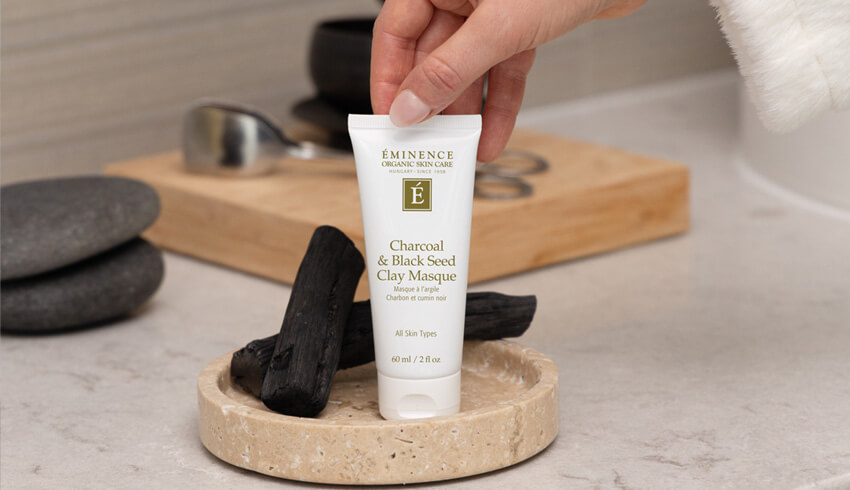
Stretch marks are a very common skin concern. And while these scars do not cause any long-term health risks, not everyone is comfortable showing them off. If you are bothered by your stretch marks and looking for help to make them appear less noticeable. Or you want to reduce your chances of developing more, we’ve got you covered.
What Are Stretch Marks?
Stretch marks are long, narrow lines or stripes that develop when our skin stretches or shrinks quickly. This abrupt change can cause the collagen and elastin, which support the structure of our skin, to rupture. As the skin heals, stretch marks may appear. Many factors can determine their size, color and texture, including what stage they are at in their development and which part of the body they're on. They often start out red and then fade over time to lighter silver or purple shades. Not everyone is prone to these narrow bands on their skin, but they are very common, more so among women.
Who Is Susceptible?
Anyone can develop stretch marks, though they appear much more often in women. While rapid weight fluctuations tend to be the most common cause, genetics can play a role too. They often occur during life events that trigger body size changes, including pregnancy, puberty and other times when weight is gained or lost quickly. With that in mind, some people choose to treat skin when anticipating such changes, during pregnancy, for example. Keeping the area well hydrated with oils and creams, and adjusting certain lifestyle factors can help to lessen the chances that stretch marks will develop.
Where Are They Most Likely To Appear?
Stretch marks can develop on many different areas of the body. The spots that are most prone are those where weight is gained, like the stomach and breasts during pregnancy or biceps when bodybuilding. It is also common to develop stretch marks on the thighs, the back, the buttocks and the hips during a growth spurt or weight gain.
How Do I Prevent Stretch Marks?
Stretch marks can appear seemingly out of nowhere, but there are some predictors that these pesky lines will develop. While getting ahead of them isn’t always possible, it’s worth noting that certain lifestyle modifications are believed to stop them from showing up, or at least slow them down. Some of them include:
- Staying hydrated: Drinking enough water may help keep your skin hydrated and soft. Soft skin doesn’t tend to develop stretch marks as easily as dry skin does.
- Maintaining a nutrient-rich diet: According to Healthline, eating foods that boost skin health may help. The suggested nutrients include: Vitamins C, D and E, zinc and protein. Maintaining a healthy diet can also decrease the chance of rapid weight loss or gain.
- Exercising regularly: For weight maintenance and overall health, sticking to an exercise routine can be helpful in preventing stretch marks. Rapid weight gain (or loss) is a common cause of stretch marks, so staying within a healthy range is one of the ways you can reduce the chances of developing them.
- Moisturizing and massaging your skin: Keeping skin moisturized and hydrated is recommended. Massaging a cream or oil into the skin in areas where stretch marks may occur can strengthen the skin barrier and play a big part in avoiding stretch marks altogether.
How Do I Treat Stretch Marks?
Once they have developed, stretch marks will not go away. They are essentially “scars” caused by damage to the collagen and elastin fibers. But as with many other types of scars, the look of stretch marks can be significantly reduced with regular topical application of certain ingredients, including vitamin E, arnica, vitamin A, jojoba, sunflower oil and rosehip oil. If you’re looking to reduce the appearance of stretch marks, here are the Eminence Organics products we recommend:
Facial Recovery Oil: This deeply nourishing and hydrating oil will leave the skin looking soft and smooth. New stretch marks will benefit from this oil because of the healing properties contained within.
Apricot Body Oil: With jojoba and other essential oils that work to leave skin feeling irresistibly soft and supple, this ultra-hydrating and soothing massage oil is a great option, whether you’re looking to fade stretch marks or not.
Stone Crop Body Oil: This lightweight body oil absorbs quickly and leaves a matte satin finish. Rosehip oil, arnica and vitamin A and E-rich avocado oil offer a well-rounded list of helpful ingredients.
Rosehip Triple C+E Firming Oil: Packed with vitamins C and E, plus jojoba oil and skin-smoothing rosemary leaf extract, your skin will feel smooth, hydrated and plumped.
Coconut Firming Body Lotion: This moisturizing and nourishing cream contains our Natural Retinol Complex, which can firm and smooth the appearance of skin.
Monoi Age Corrective Night Body Cream: Two great ingredients, jojoba oil and vitamin E-rich argan oil, help this ultra-rich body cream reveal softer, smoother and more youthful-looking skin. There are also some spa treatments that have been shown to improve the appearance of stretch marks. These include laser therapy, microneedling and chemical peels.
Product Picks
Have you treated your stretch marks and what have you found that helps minimize the look? Comment below or check out social media to join the chat.




